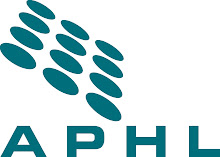Several priority APHL messages are highlighted anew in a recent Trust for America’s Health (TFAH) report, Ready or Not? 2009. Among other things, this assessment of U.S. readiness for public health emergencies finds:
• 11 states and the District of Columbia lack sufficient public health laboratory staff to work five 12-hour days for six to eight weeks during an emergency such as the novel H1N1 pandemic.
• 6 states do not have a disease surveillance system compatible with CDC’s National Electronic Disease Surveillance System (NEDSS).
• 14 states lack courier systems to assure timely, 24/7 pick-up and delivery of specimens to Laboratory Response Network (LRN) labs.
• 24 states cut public health funding between FY2008 and FY2009.
The TFAH report estimates a $20 billion/year shortfall in funding for public health and notes that federal funding for public health emergency preparedness fell 27% between FY2005 and FY2009. Both TFAH and APHL stress the critical need for adequate, sustained long-term public health funding.
APHL has long considered the shrinking public health laboratory workforce and the scarcity of real-time electronic laboratory messaging systems to be serious preparedness gaps and has launched major initiatives to address these, including its National Center for Public Health Laboratory Leadership, a number of fellowship programs for scientists-in-training and the Public Health Laboratory Interoperability Project, which has developed and piloted the IT architecture and tools to enable real-time data exchange between public health labs and CDC for several priority pathogens.
Monday, February 8, 2010
Subscribe to:
Comments (Atom)




